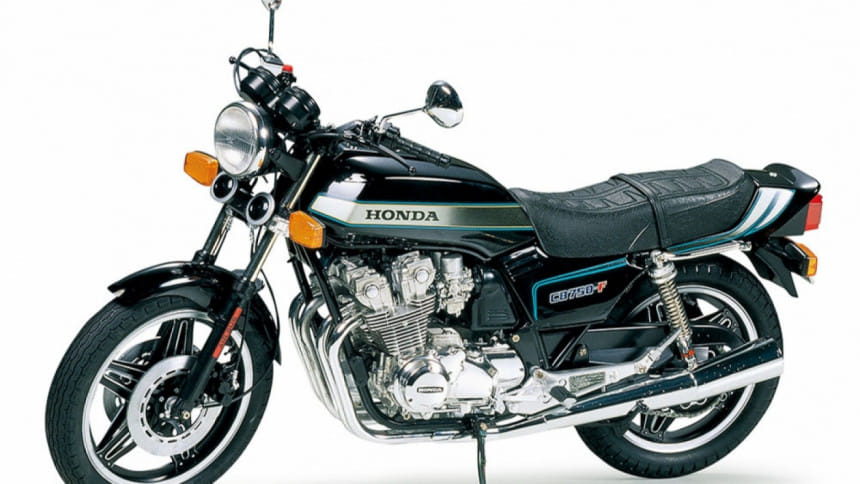Two wheeled wonders: The best looking classic bikes ever
It doesn't matter if you're a fan of two-wheelers or not—the thumping warble of a classic café racer and the sleek style of older motorbikes is appealing to almost anyone, even the staunchest anti-motorcycle crowd. Something about these following bikes manage to stir something deep inside everyone, and we suspect the way they look has a lot to do with it. So here's our list of the best looking motorbikes from yesteryears.
BMW R32

Forget your Nissan Skyline, this sleek pre-WWII motorcycle was BMW's first, featuring a shaft-drive gearbox in place of the more common chain-drive one, an 8.5 HP 500cc air-cooled flat-twin motor, and was capable of 60 MPH. Not bad for 1923. It was also impossibly sleek, almost bicycle-like in construction.
Triumph Speed Twin

The original 1937 Speed Twin was a 500cc parallel-twin motor powered bike that nearly single-handedly saved the Triumph brand in post-WWII Britain. It would serve as the basis for the resurgence of European motorcycle manufacturing in the day.
Vincent Black Shadow

The Black Shadow was launched in 1948 amidst much fanfare that claimed it to be the "fastest motorbike in the world"—the air-cooled 4-stroke V-twin 1000cc motor gave the Black Shadow a top speed of 125 MPH, faster than most sports cars of the day. The craftsmanship, attention to detail and engineering excellence makes it a collector's item today.
Moto Guzzi V7 Special

The V7 was originally designed by Moto Guzzi in consultation with the Italian police as a motorbike for VIP escorts and high-speed pursuit. The 700cc civilian model was introduced in 1967, with the V7 Special adding more power and features in 1969. It was a mix of subtle curves and sharp edges, a beauty to look at in profile.
Ducati 750 Sport

The concept of the café racer caught on in the 70s through custom homebuilt bikes, and Italian powerhouse Ducati was quick to catch on and offer a factory option. The 750 Sport offered robust performance and build quality, and established Ducati's now-stratospheric reputation.
Yamaha TZR250

Race bikes generally looked nearly the same as their roadgoing counterparts in the early days—other than cowls and extended fairings, it wasn't necessary to change a lot of the bike for racing. Yamaha's TZR250, based on the racing TZ250, changed all that with a full fairing that would be more at home today than in 1986. If you ever had a toy motorbike, this was it.
Benelli 750 SEI

Benelli's 750 was a uniquely Italian prospect—a café racer style bike with a big inline 6 (the world's first) and triple exhausts made it astoundingly heavy to operate, but you'd still want to, because look at it. A two wheeled Lamborghini Countach if you will.
Honda CB750F

The CB750 was Honda's first superbike, and was recognised by Discovery Channel to be one of "Greatest Motorbikes Ever". Built from 1969 all the way to 2007, the 750F was one of the most important models in Honda's extensively impressive portfolio. We have a few in Bangladesh, too.
Suzuki Bandit GSF400

While other manufacturers had stuck with blocky, wedge styling for their bikes well into the 90s, Suzuki bucked the trend with their curvy, almost sensual styling for the Bandit. The GSF400 was a strong performer too.
Norton Commando 961

It doesn't matter how much you know about bikes, you will have heard the name Norton at some point or the other. The Commando is one of the most recognisable classic bikes, with good reason—it was a formula that everyone tried to copy, but couldn't quite capture the charm.
Indian Chief

Harley Davidson might be the bike manufacturer that everyone associates with America and the open road and biker culture, but those who want to explore the open road and go on an epic adventure will know to opt for Indian. The Chief came with saddles and a rock-solid reputation, with looks to match—with a huge range of customisation options, you can make it yours.
Piaggio Vespa

Absolutely simple, unerringly reliable and a style icon for decades—the two wheeled counterpart to the Volkswagen Beetle became a pop-culture icon that rose above trivial things like gender identity and social cues. You could be a hairy chested bear wrestler, men among sheep, and you'd still love the "effeminate" Vespa to bits.





Comments